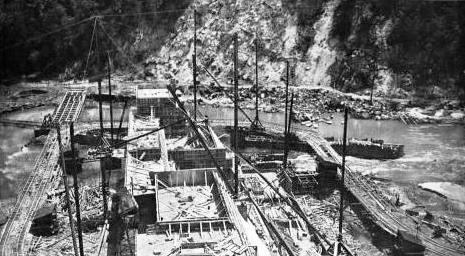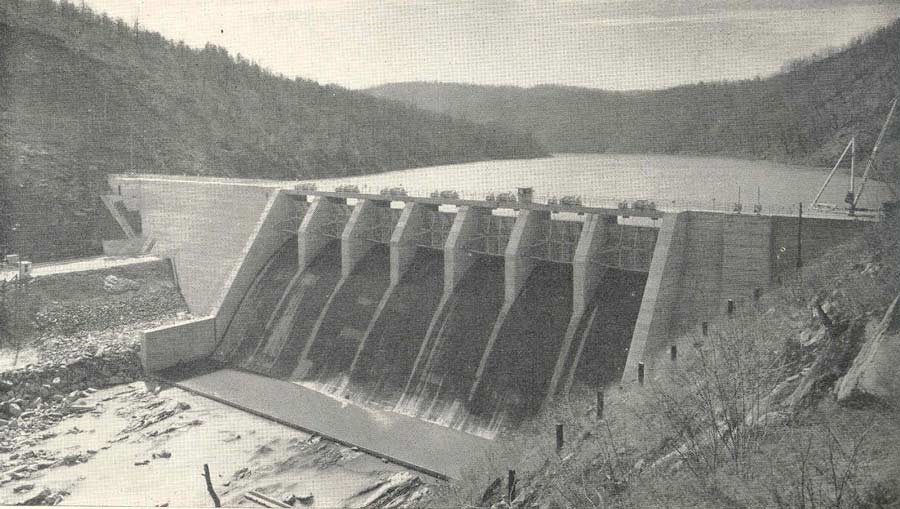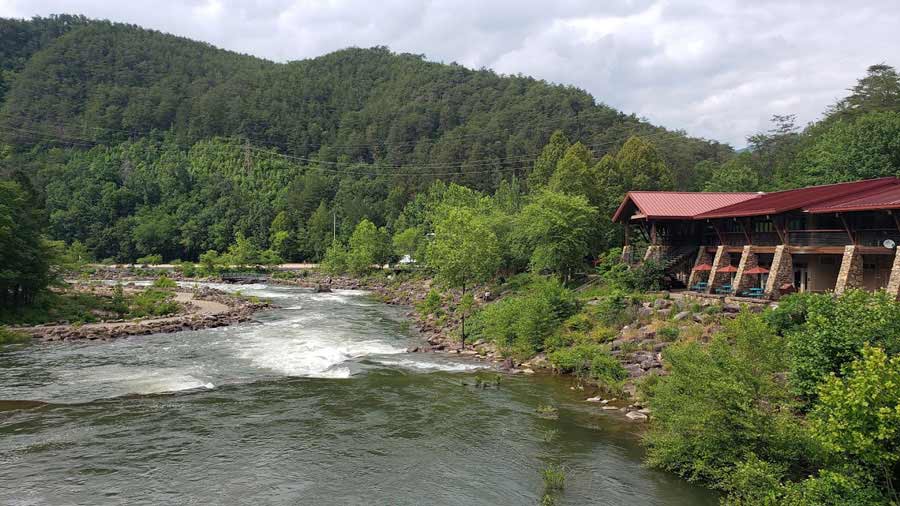Ocoee River Corridor
History of the Ocoee River
History of America's Favorite Whitewater
The Early History of the Ocoee River
Long before thrill-seekers and outdoor enthusiasts flocked to the Ocoee River, this pristine waterway significantly shaped the region’s history. The river was originally inhabited by Native American tribes, who recognized its abundant resources and bountiful wildlife. They revered the Ocoee as a sacred place, honoring its power and bounty through rituals and ceremonies. The name “Ocoee” comes from the Cherokee word “Uwagohi”, referring to the perennial bloom of Passiflora incarnata (also known as the Wild Apricot or Passion Flower).
With European colonization came new explorations of the area surrounding the Ocoee River. Settlers were drawn to its fertile banks, utilizing it for transportation and trade. As time went on, logging became a prominent industry along the river, with towering trees being harvested to meet the demands of growing towns and cities.
1911
Eastern Tennessee Power Company began construction on Dam #1 (leading to Parksville (Ocoee) Lake as part of a hydroelectric project. This altered not only the landscape but also profoundly impacted the flow of water within the river itself. The historic wooden flume diverted the waters of the upper river into the elevated water path. This concentrated the water pressure for the hydroelectric powerhouses.
1913
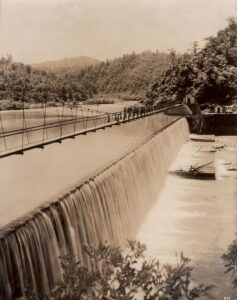
Photo Courtesy of Industry History
June 14, 1920
1939
Tennessee Valley Authority purchased the power system of Dam #1 & Dam #2, and began construction of Dam #3.
1942
Dam #3 construction is finished, which will become the location of the Upper Ocoee.
Photo Courtesy of Tennessee Valley Authority
1972
Hiwassee Scenic River State Park formed. The 23-mile (37 km) stretch of the Hiwassee River from the North Carolina state line to US Route 411 in Tennessee, is the first river to be designated by the State Scenic River Program
The Birth of Ocoee River Whitewater Rafting
1976
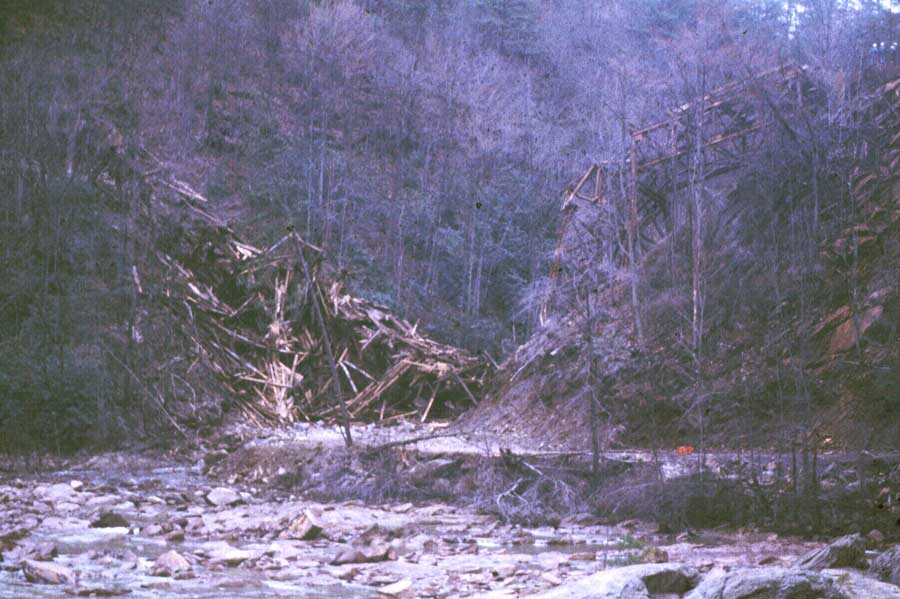
1977
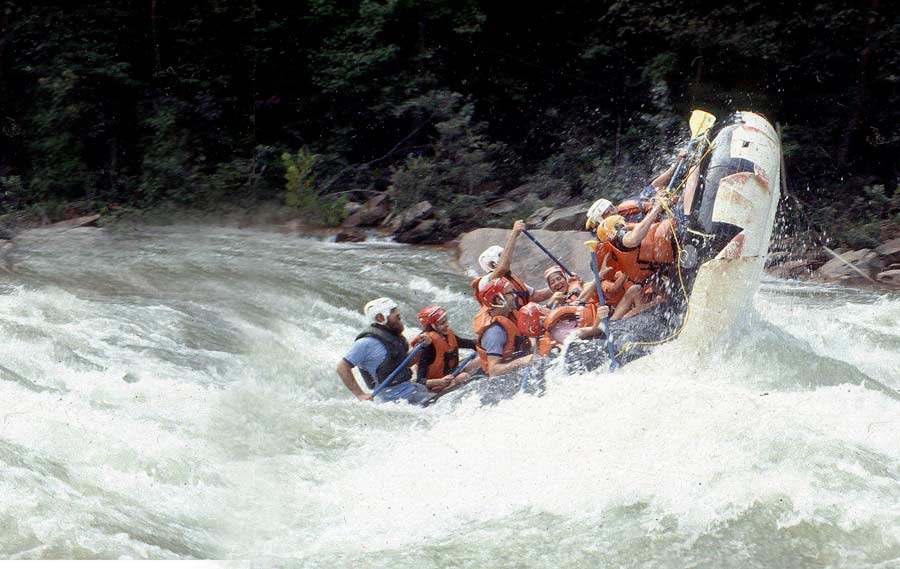
1977
Tennessee Valley Authority agrees to a release schedule to allow rafter use of the river.
1983
Ocoee River added to Hiwassee Scenic River State Park. The State Park is renamed Hiwassee Ocoee Scenic River State Park.
1996
The Upper Ocoee River is home to the 1996 Summer Olympics canoe slalom event and makes history as the first and only natural river used for the canoe slalom event.
2017
The Tennessee General Assembly passed the Ocoee River Recreation and Economic Development Fund Act, creating a fund and governing Board to support a new contract agreement between the State of Tennessee, TVA (Tennessee Valley Authority) and the US Forest Service. Under the contract agreement, the state will be responsible for the commercial rafting activities on the Ocoee, including permitting, maintenance, emergency response, and traffic management. The Hiwassee Ocoee Scenic River State Park will directly manage the Ocoee River.
2020
The Whitewater Wars is published by David Brown, with the history of saving the Ocoee River and Gauley River for water releases so rafting and boating could continue.
2022
On April 26, Ocoee Whitewater Center burns down in a devastating fire. The building is a total loss.
2025
In 2025, the park split into the Hiwassee Scenic River State Park and the Ocoee River State Park to provide more dedicated resources to each area.



